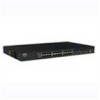Dell PowerConnect 5324 User's Guide - Page 360
Internet Protocol., Internet Protocol Address, Internetwork Packet Exchange, Link Aggregated Group
 |
View all Dell PowerConnect 5324 manuals
Add to My Manuals
Save this manual to your list of manuals |
Page 360 highlights
www.dell.com | support.dell.com System images are saved in two Flash sectors called images (Image 1 and Image 2). The active image stores the active copy; while the other image stores a second copy. Ingress Port Ports on which network traffic is received. IP Internet Protocol. Specifies the format of packets and there addressing method. IP addresses packets and forwards the packets to the correct port. IP Address Internet Protocol Address. A unique address assigned to a network device with two or more interconnected LANs or WANs. IPX Internetwork Packet Exchange. Transmits connectionless communications. J Jumbo Frames Enables transporting the identical data in fewer frames. Jumbo Frames reduce overhead, lower processing time, and ensures fewer interrupts. L LAG Link Aggregated Group. Aggregates ports or VLANs into a single virtual port or VLAN. For more information on LAGs, see Defining LAG Membership. LAN Local Area Networks. A network contained within a single room, building, campus or other limited geographical area. Layer 2 Data Link Layer or MAC Layer. Contains the physical address of a client or server station. Layer 2 processing is faster than Layer 3 processing because there is less information to process. Layer 4 Establishes a connections and ensures that all data arrives to their destination. Packets inspected at the Layer 4 level are analyzed and forwarding decisions based on their applications. Load Balancing Enables the even distribution of data and/or processing packets across available network resources. For example, load balancing may distribute the incoming packets evenly to all servers, or redirect the packets to the next available server. 360















